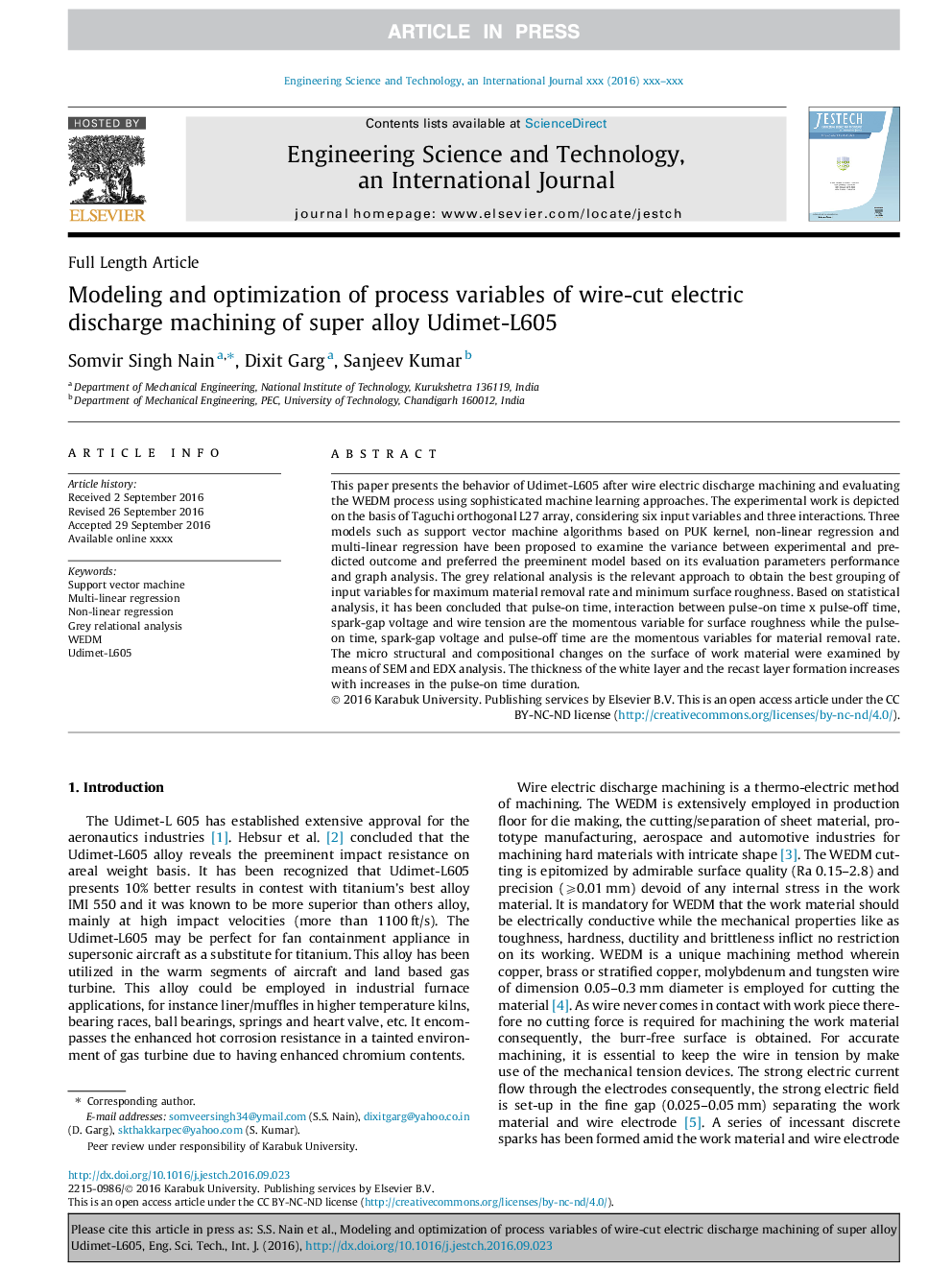| Article ID | Journal | Published Year | Pages | File Type |
|---|---|---|---|---|
| 6894064 | Engineering Science and Technology, an International Journal | 2017 | 18 Pages |
Abstract
This paper presents the behavior of Udimet-L605 after wire electric discharge machining and evaluating the WEDM process using sophisticated machine learning approaches. The experimental work is depicted on the basis of Taguchi orthogonal L27 array, considering six input variables and three interactions. Three models such as support vector machine algorithms based on PUK kernel, non-linear regression and multi-linear regression have been proposed to examine the variance between experimental and predicted outcome and preferred the preeminent model based on its evaluation parameters performance and graph analysis. The grey relational analysis is the relevant approach to obtain the best grouping of input variables for maximum material removal rate and minimum surface roughness. Based on statistical analysis, it has been concluded that pulse-on time, interaction between pulse-on time x pulse-off time, spark-gap voltage and wire tension are the momentous variable for surface roughness while the pulse-on time, spark-gap voltage and pulse-off time are the momentous variables for material removal rate. The micro structural and compositional changes on the surface of work material were examined by means of SEM and EDX analysis. The thickness of the white layer and the recast layer formation increases with increases in the pulse-on time duration.
Keywords
Related Topics
Physical Sciences and Engineering
Computer Science
Computer Science (General)
Authors
Somvir Singh Nain, Dixit Garg, Sanjeev Kumar,
